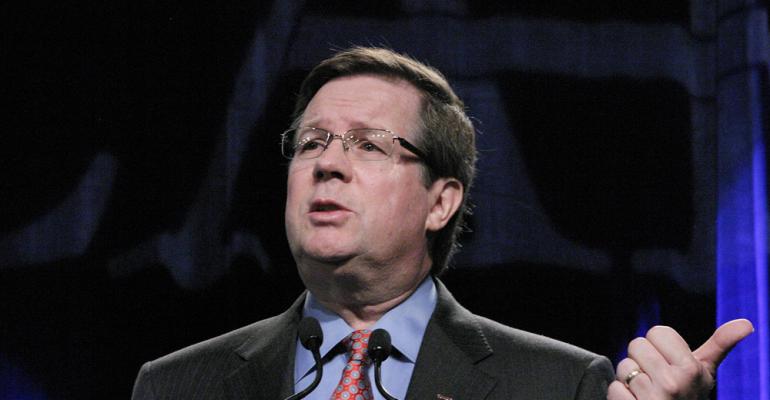TRAVERSE CITY, MI – After enduring trials of almost biblical proportions the past several years, from earthquakes and floods to massive recalls and sudden-unintended acceleration allegations, Jim Lentz, Toyota’s U.S. president, once again is sounding confident about the future.
He’s not predicting Toyota’s 14.4% U.S. market share will hit 17% again anytime soon, like it did in 2008-2009, but he does predict Lexus likely will claw its way back to the top of the luxury heap by the end of 2013.
Lexus was No.1 in luxury sales for 12 years in a row, but problems getting inventory to dealers following the catastrophic earthquake and tsunami in Japan has crimped deliveries for more than a year, Lentz says.
He acknowledges Mercedes-Benz and BMW have had several good sales years in the U.S., but he says Lexus has been operating at a disadvantage.
“We just reached optimal inventory at the beginning of this month,” he tells WardsAuto in an interview during the Center for Automotive Research’s Management Briefing Seminars here. “Next year will be a time for us to see how competitive we will be.”
Indeed, Lentz expects Lexus to be very competitive. “The GS and ES are light years ahead of the products they replace in styling, driving dynamics, technology and interior design,” he says. “The LS will be the same way.”
And he promises several more new Lexus products will be introduced at the North American International Auto Show in Detroit next January.
Despite his renewed confidence, Lentz is reluctant to talk about seeing a 17% market share again.
“I’m not sure that ever was a real number for us,” he says, explaining the financial crisis made it difficult for many of Toyota’s competitors to obtain financing for their customers, while Toyota was still flush with cash.
“We did not have to curtail retail, wholesale (or) leasing,” Lentz says, noting spiking fuel prices in 2008 also gave Toyota a tailwind.
He says the Prius, which once was slated to be built at Toyota’s new Blue Springs, MS, assembly plant that now is producing Corollas, is unlikely to be manufacturied in the U.S. anytime soon, including derivatives, mainly because component-supply logistics could be prohibitively expensive.
At the other end of the spectrum, the auto maker’s giant body-on-frame SUVs, including the Land Cruiser, Sequoia and Lexus versions, should remain in the Toyota lineup for the foreseeable future.
Their domestic volume is too small to ding corporate average fuel economy, and they are profitable vehicles for export markets such as the Middle East.





